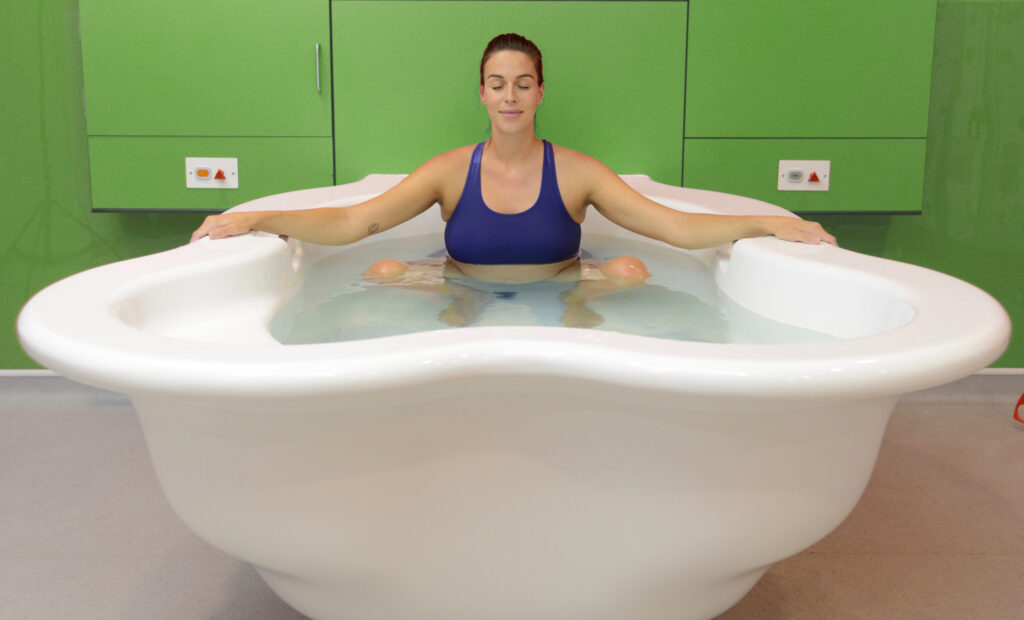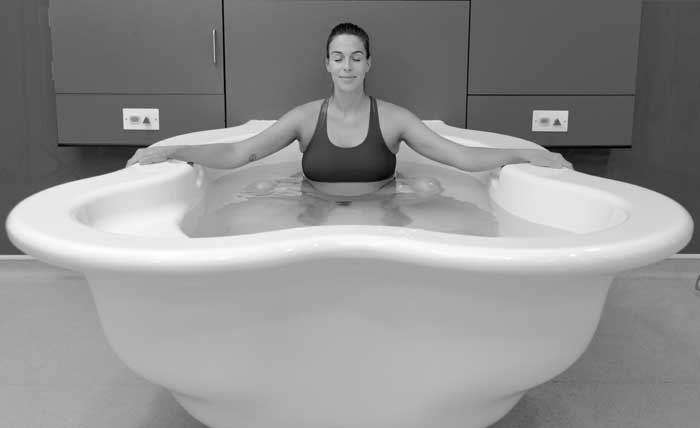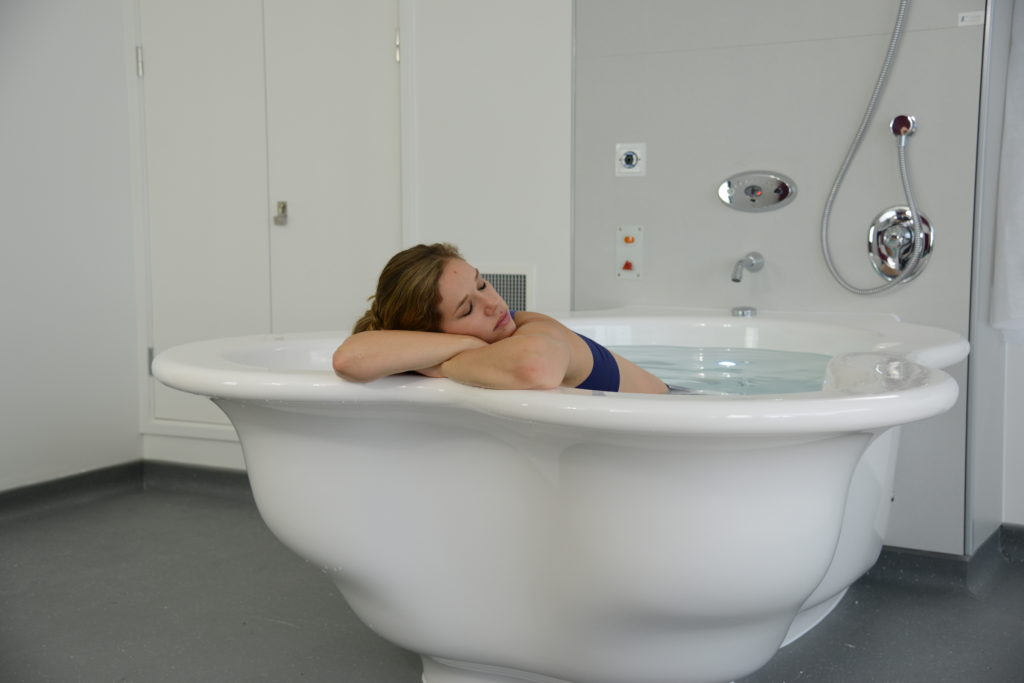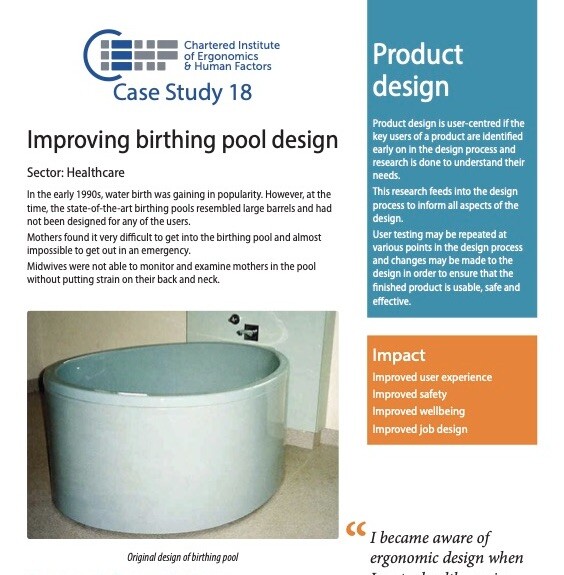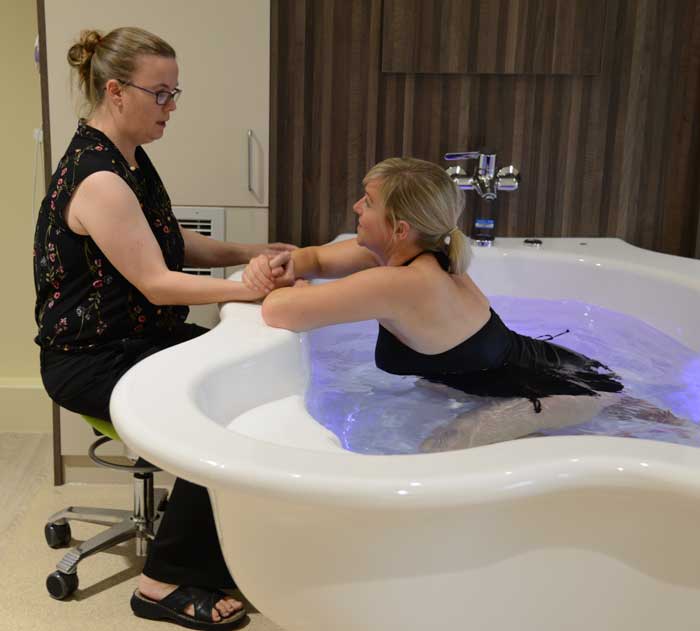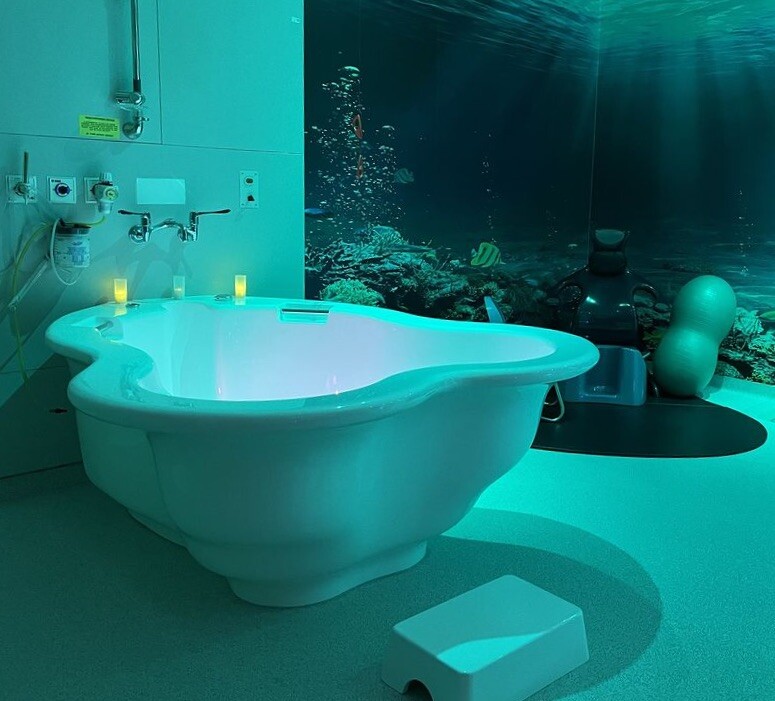The history of water birth and the development of specialised water birth pools is a remarkable story of innovation and transformation in childbirth practices, driven by the insights of obstetrician Michel Odent and the design expertise of Keith Brainin.
Michel Odent’s groundbreaking work in the field of water birth began in the late 1970s at a state hospital near Paris.
Odent believed that childbirth had become overly medicalized and sought a more natural approach.
He introduced a pool in the hospital to ease the pain of labor, leading to some babies being born in the water.

Michel Odent with his pool in the maternity unit in Pithiviers, France
This innovative approach offered a more comfortable and less stressful birthing experience for mothers, with warm water helping to relax muscles, reduce stress, and enhance blood circulation.
Odent’s work demonstrated a reduction in the need for interventions like epidurals and episiotomies, aligning with many parents’ desires for a minimally invasive childbirth experience.
His observations and clinical experiences suggested that water birth provided a gentle transition for babies, mirroring the amniotic fluid environment.
“When asked about the history of birthing pools in hospitals, I mention the day when Keith Brainin realised that special bath tubs might be designed and commercialised to meet the needs of labouring women.” Michel Odent

1989 – Sheila Kitzinger and Ethel Burns raise money to have the first specially designed water birth pool installed in an NHS Hospital at the John Radcliffe, Oxford
Building on Odent’s pioneering work, Keith Brainin, founder and director of Active Birth Pools, developed the world’s first specially designed water birth pools.
Starting in 1987, Brainin and his team focused on design, engineering, and manufacture to develop a water birth pool that excelled in quality, functionality, and durability.

Judges at the Building Better Healthcare Awards said that, “Active Birth Pools are the pinnacle of water birth pool design and development – an incomparable combination of design, materials and manufacturing”
The Active Birth Pool was designed with ergonomic principles to support natural childbirth postures and provide comfort for the mother.
Features like extra-wide rims, integrated handrails, and specially designed labor support and safety seats were included to enhance safety and functionality.
The use of Ficore composite for construction ensured a harder, more chemical-resistant, and warm-to-the-touch surface that retains heat efficiently.

Keith Brainin with Sheena Byron and midwives in the Lotus Birth Centre, Royal London Hospital 2018
Additionally, the pools were equipped with features like chromotherapy LED lighting and Bluetooth sound systems, allowing mothers to personalize their birthing environment.
These innovations in water birth pool design have significantly contributed to the safety, comfort, and natural approach to childbirth.
Both Michel Odent’s clinical insights and Keith Brainin’s design innovations have played a crucial role in transforming childbirth practices, emphasizing the importance of a natural, holistic approach to labor and delivery.
Their contributions have been instrumental in making water birth a viable and increasingly popular option for expectant mothers worldwide.

